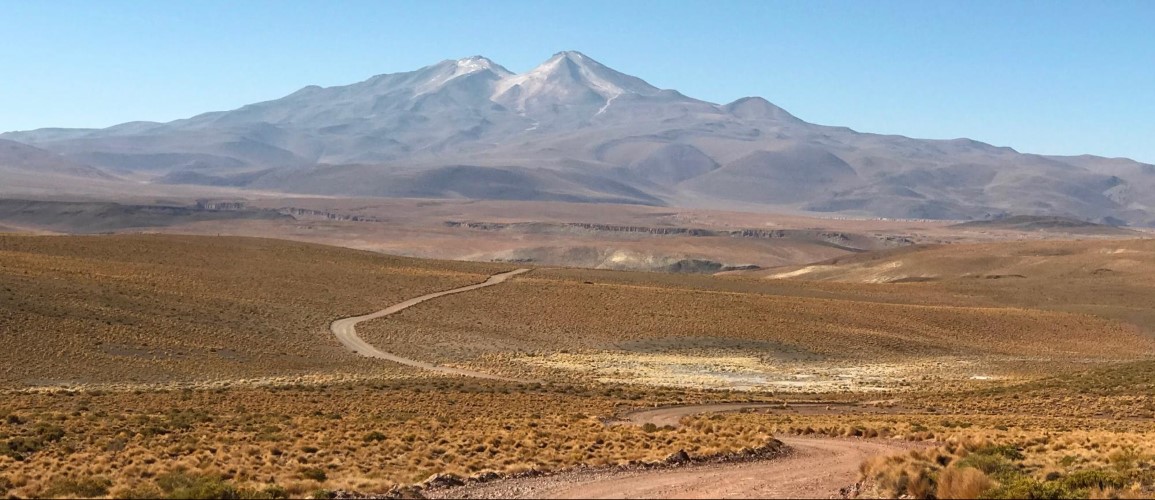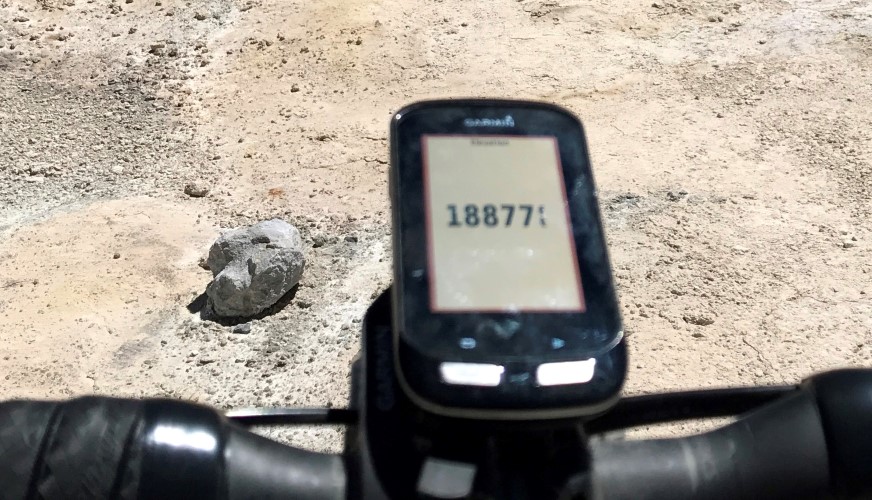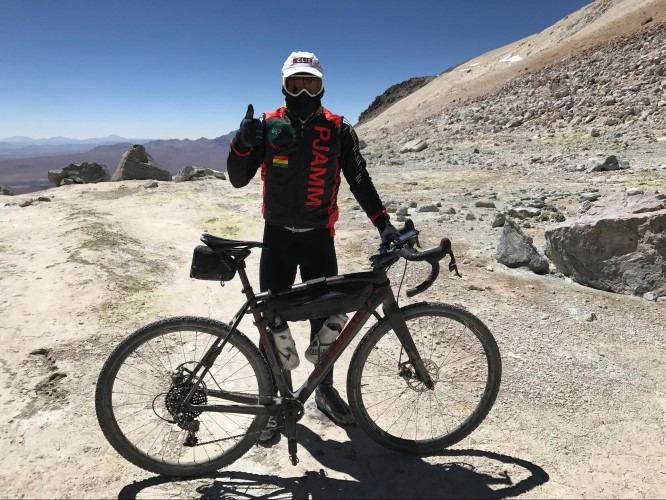High Altitude Cycling: A Super Volcano Named Uturuncu
-
Less than two miles into PJAMM's 2017 Ututruncu summit push, just over 14,000 feet above sea level, it seemed unlikely that we'd be standing atop the volcano hogging the view ahead. Though I had the advantage of 28x42 gearing, my 32mm gravel tires were sinking inches into the sandy summit road. I was winded, dizzy, unable to ride more than a couple of bike lengths at a time due to a cruel combination of high altitude and low traction. Dishearteningly, we hadn't even made it halfway to the abandoned sulfur mine located at 18,887'. Fortunately, having ridden at high altitude before, I knew the drill... "Just keep pedaling."


Success!!
Of course, high altitude cycling is not just a matter of will power. In preparation for Uturuncu summit day in 2017, I had slept in an oxygen deprivation tent (to the dismay of my girlfriend) for the six months leading up to our South American excursion. Additionally, I was "in the saddle" about fifteen hours a week, most often doing repeats up Happy Valley road which averages 12.4% over a half mile. I was in the best shape of my life for my battle with the mighty Uturuncu.

Given that there is approximately 3% less oxygen in the air every 1,000' above sea level, the summit air of Uturuncu would have around 57% less oxygen than me and my sea level comrades were used to breathing in Santa Rosa, CA. There are a plethora of factors that contribute to one's perceived difficulty riding at altitude though, and the perceived effect of having 57% less oxygen is highly subjective. Age, physical condition, home elevation, gender, and genetics all play into one's performance (or lack thereof) at high altitude.
Caution to the Wind?
Cycling seems to be a self-selecting group of driven (stubborn), tough (stubborn), and committed (stubborn) individuals. Because of this, it is paramount to understand the undeniable risks presented when cycling at high altitudes. Despite all drive and mental strength, the human body has limits, and all cyclists will find theirs should they ascend to high enough elevations. Further, riding in a group -or at least not alone- is prudent when at high elevations.
The initial effects of altitude sickness will usually show themselves in some combination of the following symptoms: headache, shortness of breath, dizziness or lightheadedness, extreme fatigue, dizziness, loss of appetite. The likelihood of experiencing at least one of these symptoms above 10,000' is likely and is not necessarily a cause to wave the flag of defeat. That said, it is important to recognize that as lack of oxygen fogs the brain at high altitudes, decision making becomes impaired. Having trusted adventure partners becomes immediately important in making the right decisions at altitude. Additionally, as available oxygen in the air decreases, breathing increases. This will lead to dehydration in a much more deceptive way than cycling at sea level, as much of the water loss will be through breathing instead of perspiration.
Mother's Little Helper
In preparation for Uturuncu, I visited my general practitioner to have my vitals checked and to seek out any helpful medications. After examining my heart and lungs, my doctor gave me the okay to pursue the summit, while also taking time to question "whether it was worth the risk." And there was my George Mallory moment! Except instead of delivering a poignant line like "because it is there," I instead just said "yes." Anyway, poetry and one-liners aside, a doctor is likely to prescribe a medication called "Acetazolamide" to help keep altitude sickness at bay. For my summit push to Uturuncu though, I opted for my own version of "pan y agua." I flew to Bolivia armed with a Costco quantity of Ibuprofen to help fight off any altitude sickness.
A Spade is a Spade, and Defeat Beats Death
While general altitude sickness is temporary and non-life threatening, there are serious risks to be considered when cycling at high altitude. High Altitude Cerebral Edema, known in the business as HACE, is a severe and potentially life threatening condition. The real kicker with HACE, is that all of its warning signs are also symptoms of simple altitude sickness. This is the dance with the devil that all cyclists riding at high altitudes must come to terms with. Symptoms of HACE include: headache, weakness, feeling and being sick, loss of coordination, feeling confused, hallucinations, loss of appetite, etc. Personally, and I am no doctor, I have always drawn my line-in-the-sand at hallucinations. I've always gotten headaches while riding at high altitude. Similarly, I've never ridden above 10,000' without feeling weak, nauseous, and dizzy. Through all of those summits and symptoms, I've always trudged on - electing to call it a day if I began to see large pizzas forming a halo around the head of a mostly unclothed lady in the sky (or any other mirages of that kind). Ultimately though, it comes down to knowing one's own body, it's limits, and -always- electing to fight another day should symptoms suggest waving the white flag. There is no "toughing out" HACE. If you think you have it - you probably do, and should immediately begin descending.
The Secret Weapon
Even a hydrated, well acclimated, properly fueled, and aptly medicated, professional cyclist will feel the painful pinch of high altitude riding. In many ways, it is akin to riding into a headwind, in that the more you push, panic, and allow frustration to mount - the more difficult the task becomes. For headwinds and high altitudes alike, I find that the least painful way forward is to take it slow. Accept that it is going to be a slow, uncomfortable slog to the top. Find a gear that works, and just-keep-pedaling. In that way, short of HACE, the mountain will never get the better of you. The summit is always in reach.

